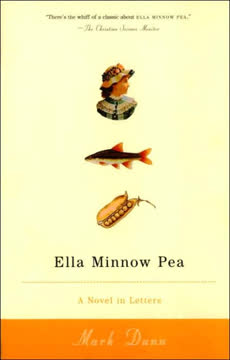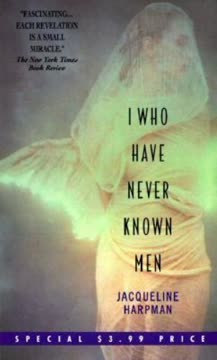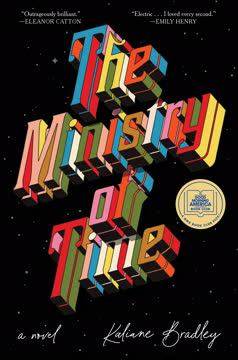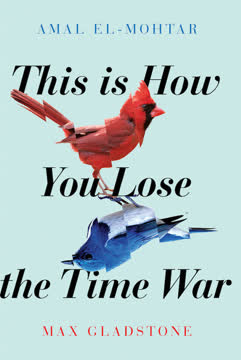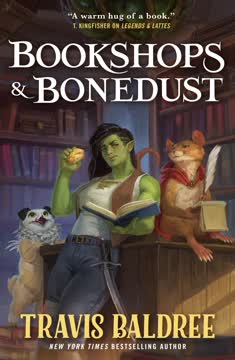Plot Summary
Island of Letters
Nollop, a small, independent island off the coast of South Carolina, is a society built on the veneration of language. Named after Nevin Nollop, the supposed creator of the pangram "The quick brown fox jumps over the lazy dog," the island's culture is steeped in linguistic pride and tradition. The people are highly literate, eschewing modern technology in favor of letter-writing and intellectual pursuits. Their communal life is peaceful, if somewhat insular, and the statue of Nollop, crowned with his famous sentence, stands as the island's spiritual and cultural center. The story begins with the islanders' deep respect for words and the written language, setting the stage for the events that will soon unravel their way of life.
The Fallen Tile
The inciting incident occurs when a tile bearing the letter "Z" falls from the Nollop statue's inscription. The High Council, interpreting this as a divine sign from Nollop himself, convenes to determine its meaning. Rather than seeing it as a simple accident, the Council proclaims it a message from beyond the grave, demanding the removal of the letter "Z" from all spoken and written communication. This seemingly minor event marks the beginning of a series of increasingly draconian linguistic restrictions, as the Council's paranoia and zealotry take hold. The islanders are both bemused and alarmed, but most comply, fearing the Council's authority.
Council's Decree
The High Council's decree is swift and severe: anyone caught using the forbidden letter will be punished, escalating from reprimand to flogging, and finally, banishment. The edict is enforced with zeal, and the island's culture of open communication is immediately threatened. Books are confiscated, libraries shuttered, and neighbors begin to inform on one another. The Council's power grows unchecked, and the people's fear of punishment leads to self-censorship and suspicion. The loss of a single letter, once thought trivial, begins to erode the very fabric of Nollopian society.
The First Forbidden Letter
As the ban on "Z" takes effect, the islanders hold a mock-funeral for the letter, both mocking and mourning its loss. Some, like Ella Minnow Pea and her family, try to find humor and resilience in the situation, but others are deeply unsettled. The practical consequences become clear: books, names, and even simple conversations are affected. The High Council's willingness to enforce the ban with violence and exile creates a climate of fear, and the first offenders are publicly shamed. The community's initial compliance is tinged with anxiety and a growing sense of injustice.
Fear and Compliance
With the precedent set, the High Council's authority becomes absolute. As more tiles fall—each one interpreted as a new command from Nollop—additional letters are banned. The punishments become more severe, and the people's fear deepens. Teachers struggle to instruct without the forbidden letters, and even children are not exempt from the harsh penalties. The island's intellectual life withers as books are burned and conversation is stilted. The Council's paranoia grows, and the people's willingness to resist is crushed by the threat of exile or death.
Words Lost, Voices Silenced
As the alphabet is whittled away, communication becomes increasingly difficult. Families are separated by banishment, friendships are strained by suspicion, and the island's once-rich culture is reduced to a shadow of itself. The loss of each letter is felt acutely, as words and expressions disappear from daily life. The people's ability to express themselves, to share ideas and emotions, is crippled. The High Council's edicts have not only silenced dissent but have also severed the bonds that once held the community together.
The Alphabet Unravels
With each new fallen tile, the High Council bans another letter, accelerating the island's descent into chaos. The rules become impossible to follow, and the punishments more arbitrary. The economy falters, families flee or are exiled, and the population dwindles. The Council, now a self-serving oligarchy, confiscates property and consolidates power. The remaining islanders are left isolated, hungry, and desperate, clinging to the remnants of their language and identity. The once-utopian society is now a dystopian nightmare, ruled by fear and superstition.
Resistance in Secret
Despite the High Council's repression, pockets of resistance form. Ella and her family, along with other like-minded islanders, begin to meet in secret, plotting ways to restore their language and freedom. They are joined by outsiders, like Nate Warren, who bring news and scientific evidence that the falling tiles are the result of old glue, not divine will. The resistance is fueled by hope, love, and a stubborn refusal to accept the Council's authority. Their efforts are dangerous, but they offer a glimmer of hope in an otherwise bleak landscape.
Science Versus Faith
Nate Warren's arrival brings a crucial turning point. Armed with scientific analysis, he demonstrates that the tiles are falling due to natural causes, not supernatural intervention. He tries to persuade the more reasonable Council member, Rederick Lyttle, to reconsider the bans. The High Council, however, is divided between zealots and pragmatists, and the evidence is dismissed or ignored. The conflict between science and faith, reason and dogma, becomes the central struggle, with the fate of the island hanging in the balance.
The Challenge Issued
In a desperate bid to end the madness, Nate and Ella propose a challenge: if anyone can create a pangram as short as Nollop's, the High Council must admit that Nollop was not uniquely inspired and rescind the bans. The Council, confident in Nollop's singular genius, accepts. The islanders, now reduced to a handful, work feverishly to construct a new sentence using the ever-dwindling alphabet. The pangram challenge becomes a race against time, as more letters are lost and the threat of total silence looms.
Descent into Chaos
As the pangram challenge deadline approaches, the situation grows dire. Most of the population has been exiled or has fled; others die from despair or misfortune. The High Council's authority is absolute, but its legitimacy is crumbling. The few remaining islanders are exhausted, traumatized, and nearly mute, struggling to communicate with only a handful of letters. The society that once prized language above all else is now on the brink of extinction, undone by its own reverence for words.
Love and Exile
Amid the chaos, love and loyalty persist. Ella's relationships—with her family, with Nate, with her friends—are tested but not broken. Letters are smuggled, secret meetings held, and small acts of kindness become acts of resistance. The story's epistolary form underscores the importance of connection, even as language itself is under siege. The personal becomes political, as the struggle to save language is also a struggle to save love, memory, and identity.
The Last Letters
With only a few letters left, communication becomes almost impossible. The narrative itself breaks down, mirroring the collapse of society. Yet even in this near-silence, Ella and the last survivors refuse to give up. They experiment with numbers, signs, and whatever scraps of language remain. The final days are marked by desperation, but also by a stubborn hope that meaning can still be made, even in the absence of words.
The Sentence That Saves
In a moment of serendipity, Ella discovers a pangram—"Pack my box with five dozen liquor jugs"—in a farewell letter from her father Amos. It meets the High Council's challenge: all 26 letters, only 32 characters. Presented to the Council, the sentence is accepted, and the bans are lifted. The tyranny ends not with a grand gesture, but with the accidental wisdom of an ordinary man. The power of language is restored, and the survivors are free to rebuild.
Language Restored
With the bans rescinded, the exiles return, and the island begins to heal. The High Council resigns in disgrace, and the people reclaim their language and their lives. The trauma of the past months lingers, but so does the resilience of those who endured. The story ends with a sense of cautious optimism, as the islanders vow never again to let fear and superstition override reason and compassion.
Lessons from Nollop
The tale of Nollop becomes a cautionary parable about the perils of authoritarianism, the fragility of freedom, and the enduring power of human connection. The islanders' ordeal is a reminder that language is not just a tool, but the very fabric of community and identity. The story closes with a call to cherish and protect the freedom to speak, write, and think—lest it be lost to the whims of those who would control it.
Characters
Ella Minnow Pea
Ella is the heart of the novel—a young woman whose intelligence, empathy, and determination drive the resistance against the High Council's linguistic tyranny. She is deeply connected to her family and friends, and her letters serve as both a chronicle of the island's descent and a lifeline for those she loves. Ella's psychological resilience is tested as she witnesses the unraveling of her society, but she never loses her sense of hope or her commitment to truth. Her accidental discovery of the saving sentence underscores her belief in the power of ordinary people to effect extraordinary change.
Tassie Purcy
Tassie is Ella's cousin and confidante, a passionate and articulate young woman who shares Ella's skepticism of the High Council and her love of language. Tassie's letters are often more emotional and rebellious, reflecting her deep sense of injustice and her longing for freedom. Her relationship with Nate Warren brings a romantic dimension to the story, and her eventual exile is both a personal loss and a symbol of the broader diaspora. Tassie's psychological journey is one of grief, anger, and ultimately, resilience.
Nate Warren
Nate is an American scholar whose arrival on Nollop brings scientific perspective and outside support to the embattled islanders. He is analytical, compassionate, and persistent, challenging the High Council's superstitions with evidence and reason. Nate's relationship with Tassie and his collaboration with Ella make him a bridge between the insular world of Nollop and the wider world. His exile is a turning point, but his influence endures through the pangram challenge he helps to create.
Gwenette Minnow Pea
Ella's mother, Gwenette, is a stabilizing force in the family, offering support and guidance even as the world around her collapses. She is practical, nurturing, and quietly courageous, enduring public humiliation and personal loss with dignity. Gwenette's relationship with her husband Amos and her daughter Ella is central to the story's emotional core, and her resilience in the face of adversity exemplifies the strength of the island's women.
Amos Minnow Pea
Amos is Ella's father, a humble carpenter whose farewell letter inadvertently contains the sentence that saves the island. He is a gentle, hardworking man, devoted to his family and community. Amos's struggles with addiction and his eventual exile add depth to his character, and his unintentional role in the island's salvation is a testament to the power of ordinary acts. Amos represents the everyman whose quiet contributions can have profound consequences.
Rederick Lyttle
Lyttle is the most sympathetic member of the High Council, torn between loyalty to tradition and recognition of the Council's folly. He is open to reason and ultimately instrumental in accepting the pangram challenge that leads to the restoration of language. Lyttle's internal conflict and eventual courage highlight the possibility of redemption, even within corrupt systems.
Mittie Purcy
Tassie's mother, Mittie, is a dedicated educator whose life is upended by the High Council's bans. She suffers public humiliation and personal despair, but her love for her daughter and her commitment to her students never waver. Mittie's psychological journey is marked by anxiety, depression, and eventual hope, reflecting the broader impact of authoritarianism on individuals and families.
Tom
Tom is a university assistant who becomes Ella's ally in the final stages of the pangram challenge. He is resourceful, optimistic, and supportive, providing both practical help and emotional comfort. Tom's partnership with Ella underscores the importance of collaboration and solidarity in the face of oppression.
Georgeanne Towgate
Georgeanne is a complex character—at times a collaborator with the High Council, at others a victim of its cruelty. Her actions are driven by fear, loneliness, and a desperate desire for security. Georgeanne's psychological unraveling and eventual death from lead poisoning are a stark reminder of the human cost of repression and isolation.
The High Council
The Council is both a collective character and a symbol of unchecked power. Its members range from true believers to opportunists, but all are complicit in the island's descent into tyranny. The Council's psychological profile is marked by paranoia, rigidity, and a willingness to sacrifice the community for the sake of dogma. Their eventual downfall is both a personal and political reckoning.
Plot Devices
Epistolary Structure
The novel's epistolary format allows for intimate glimpses into the thoughts, emotions, and relationships of its characters. Letters serve as both a narrative device and a symbol of the island's linguistic culture, highlighting the personal impact of public events. As the alphabet is whittled away, the letters themselves become more fragmented and desperate, mirroring the collapse of society.
Lipogrammatic Constraint
The central plot device is the gradual banning of letters from the alphabet, forcing both characters and author to adapt their language. This constraint is both a technical challenge and a metaphor for the loss of freedom, creativity, and identity. The shrinking vocabulary heightens tension, dramatizes the stakes, and ultimately underscores the resilience of human expression.
Satire and Allegory
The novel uses satire to critique the dangers of dogmatism, censorship, and the abuse of power. The High Council's literal-mindedness and the islanders' suffering are exaggerated to highlight the absurdity of linguistic tyranny. The story functions as an allegory for real-world threats to free speech and the importance of dissent.
Foreshadowing and Irony
The initial fall of the "Z" tile, dismissed by some as meaningless, foreshadows the catastrophic consequences of overinterpretation and blind obedience. The High Council's confidence in Nollop's uniqueness is ironically undone by the accidental creation of a new pangram, emphasizing the unpredictability of language and history.
The Pangram Challenge
The challenge to create a new pangram is both a plot engine and a symbol of resistance. It unites the remaining islanders in a common cause, providing hope and purpose amid despair. The eventual solution—found in an ordinary letter—reinforces the theme that salvation often comes from unexpected places.
Analysis
Mark Dunn's novel uses the playful device of a disappearing alphabet to explore serious themes: how language shapes thought, how power corrupts, and how communities can be undone by fear and dogma. The story's epistolary form and lipogrammatic constraints are not just literary games—they are integral to the novel's message, dramatizing the loss of expression and the struggle to maintain identity under repression. The characters' resilience, creativity, and solidarity offer hope, suggesting that even in the darkest times, ordinary people can reclaim their voices and restore what has been lost. In an age of rising censorship and polarization, "Ella Minnow Pea" is both a celebration of language and a warning against those who would seek to control it.
Last updated:
FAQ
0. Synopsis & Basic Details
What is Ella Minnow Pea: A Novel in Letters about?
- A Linguistic Dystopia: Ella Minnow Pea is an epistolary novel chronicling the gradual collapse of a utopian island society, Nollop, as its governing High Council progressively bans letters of the alphabet, believing fallen tiles from a statue of their revered linguist, Nevin Nollop, are divine commands.
- Fight for Free Speech: The story follows young Ella Minnow Pea and her community as they struggle to communicate, maintain their sanity, and ultimately resist the increasingly draconian laws that threaten to silence them completely, forcing them to find a pangram to save their language.
- Satirical Allegory: Through a clever lipogrammatic constraint, the novel satirizes authoritarianism, censorship, and the dangers of blind faith, exploring the profound connection between language, identity, and freedom in a world where words are literally disappearing.
Why should I read Ella Minnow Pea: A Novel in Letters?
- Unique Literary Experiment: Readers seeking a truly original and intellectually stimulating experience will be captivated by Mark Dunn's ingenious use of lipograms, which forces both characters and the author to adapt their language as letters are banned, creating a narrative that is both challenging and deeply immersive.
- Timely Social Commentary: Beyond its clever premise, the novel offers a powerful and enduring allegory for the dangers of censorship, the erosion of civil liberties, and the insidious nature of authoritarian control, making its themes of freedom of speech and resistance highly relevant in any era.
- Heartfelt Human Story: Despite the linguistic gymnastics, Ella Minnow Pea is fundamentally a story about human resilience, love, and community, showcasing how individuals cope with unimaginable loss and fight to preserve their connections and identity in the face of overwhelming adversity, making it a moving and memorable read.
What is the background of Ella Minnow Pea: A Novel in Letters?
- Fictional Island Nation: Nollop is an autonomous island nation established in the 1840s by dispossessed Southern Americans, later declaring independence in 1870. Its culture, as described in the book's epigraph, emphasizes liberal arts education and scholarship, elevating language to an art form while shunning modern technology.
- Homage to Pangrams: The island is named after Nevin Nollop, the fictional author of the famous pangram "The quick brown fox jumps over the lazy dog." This reverence for language and Nollop's creation forms the bedrock of their society, making the High Council's decrees particularly ironic and devastating.
- Epistolary Tradition: The novel's format as a series of letters reflects Nollop's insular, pre-technological society, where letter-writing is the primary mode of communication, underscoring the cultural context that makes the linguistic bans so impactful on daily life and personal relationships.
What are the most memorable quotes in Ella Minnow Pea: A Novel in Letters?
- "The quick brown fox jumps over the lazy dog.": This iconic pangram, central to Nollopian identity and the catalyst for the entire plot, symbolizes the perfection of language that the islanders strive to protect, and its gradual mutilation visually represents the erosion of their freedom and culture.
- "We are, when it comes right down to it, all of us: mere monkeys at typewriters.": Ella's profound realization at the novel's climax challenges the notion of Nollop's divine genius, asserting that creativity and even genius can arise from accidental, ordinary sources, democratizing the power of language and undermining the Council's authority.
- "Dead dogs tell no tails.": The proposed new inscription for the cenotaph, a deliberate anti-pangram, serves as a powerful, ironic statement against the previous veneration of Nollop's sentence, ensuring that future generations will not fall prey to similar linguistic idolatry and the tyranny it can breed.
What writing style, narrative choices, and literary techniques does Mark Dunn use?
- Progressive Lipogrammatic Constraint: Mark Dunn masterfully employs a lipogram, where each banned letter is systematically removed from the narrative itself, forcing the author's prose to mirror the characters' struggles, creating a unique and immersive reading experience that directly reflects the story's central conflict.
- Epistolary Narrative: The entire novel unfolds through letters, notes, and other written communications between characters, providing intimate, first-person perspectives that reveal emotional states, personal struggles, and the gradual breakdown of society, making the reader a direct witness to the unfolding crisis.
- Satirical Tone and Allegory: Dunn uses a blend of whimsical absurdity and sharp satire to critique authoritarianism and the dangers of dogmatic belief, transforming the seemingly lighthearted premise of a disappearing alphabet into a profound allegory for real-world issues of censorship, freedom of speech, and the abuse of power.
1. Hidden Details & Subtle Connections
What are some minor details that add significant meaning?
- Amos's Moonshine Jugs: Initially a seemingly trivial hobby for Ella's father, Amos, his miniature moonshine jugs become the unexpected source of the saving pangram, "Pack my box with five dozen liquor jugs." This detail subtly reinforces the theme that profound solutions can emerge from the most ordinary, even overlooked, aspects of life, challenging the Council's elitist view of language.
- The Secretary's Failed Challenge: The Council's letter of September 11 mentions Nollop's "saucy stenographer" who was cashiered for claiming she could create a pangram and failing. This seemingly throwaway anecdote directly foreshadows the ultimate challenge presented to the islanders, highlighting the Council's hubris and Nollop's own insecurity, while setting the stage for the eventual success of ordinary people.
- Georgeanne Towgate's Paint: Georgeanne's descent into painting her body with "remnant paint" from the hardware store, leading to her death from lead poisoning, is a tragic, subtle detail. It symbolizes the toxic environment created by the Council's tyranny, where even attempts at self-expression become self-destructive, and highlights the hidden costs of societal breakdown beyond just linguistic loss.
What are some subtle foreshadowing and callbacks?
- Ella's Early Linguistic Play: In her first letter, Ella notes her own ability to substitute words for "Z" (e.g., "gaze" to "looked," "snooze" to "sleep"), even musing, "Perhaps I may actually grow to embrace this challenge." This early, almost playful, engagement with linguistic adaptation subtly foreshadows her eventual central role in solving the pangram challenge and her resilience in the face of escalating restrictions.
- Nate's "Charlatan" Theory: Nate Warren's early assertion that Nollop was a "pure charlatan" and "without any merit" directly foreshadows the discovery in the vault that Nollop's famous pangram was likely derived from a children's storybook. This callback validates Nate's skepticism and exposes the foundational lie upon which the Council's authority was built, revealing the true nature of Nollop's "genius."
- The "Monkeys at Typewriters" Metaphor: Ella's final reflection that "any one of us could have come up with such a sentence. We are, when it comes right down to it, all of us: mere monkeys at typewriters" echoes the Council's earlier dismissal of Nollop's secretary. This callback powerfully subverts the Council's elitist view of creativity, suggesting that genius is not exclusive but inherent in ordinary human endeavor, and that even random chance can yield profound results.
What are some unexpected character connections?
- Mittie Purcy and Rory Cummels: Tassie's mother, Mittie, finds an unexpected romantic connection with Rory Cummels, the market owner, after both are deeply affected by the Council's decrees and personal losses. This relationship, blossoming amidst despair, highlights the enduring human need for companionship and hope, even as their world crumbles, offering a poignant counterpoint to the widespread isolation.
- Ella Minnow Pea and Tom: Tom, Professor Mannheim's young assistant, becomes Ella's primary partner in the final, desperate push for Enterprise 32 after Mannheim's death. Their collaboration, marked by mutual respect and a burgeoning affection, demonstrates how shared purpose and adversity can forge strong, unexpected bonds, transcending previous social hierarchies (university assistant and laundress).
- Georgeanne Towgate's Late Redemption: The initially antagonistic Georgeanne, who reported Mittie, later seeks solace and friendship from Mittie and Ella as her own family leaves and she faces isolation. Her final, tragic letters, expressing regret and a desire for connection, reveal a complex character driven by fear, not malice, and underscore the devastating, isolating impact of the Council's policies on even its unwitting enforcers.
Who are the most significant supporting characters?
- Professor Mannheim: A university instructor who dedicates himself to Enterprise 32, Professor Mannheim represents the intellectual and academic resistance to the Council's tyranny. His tireless efforts to find a new pangram, culminating in a 44-letter sentence, provide crucial momentum and expertise to the cause, making his eventual death a significant blow and a symbol of the regime's brutality.
- Tanya T. (the woman in the orange hat): Tanya, Ella's new neighbor, quickly becomes a vital ally and friend, offering practical support and emotional solidarity. Her willingness to connect with Ella, despite the pervasive fear, and her eventual role in caring for Georgeanne and Paula, highlight the importance of community and mutual aid in times of crisis, embodying the spirit of human connection.
- Sentry William P.: This unnamed prison sentry, who allows Nate to free Tassie and Mittie, is a pivotal character whose single act of defiance changes the course of the narrative. His decision to accept flogging rather than betray his conscience demonstrates that even within the oppressive system, individual morality and compassion can prevail, offering a powerful moment of hope and resistance.
2. Psychological, Emotional, & Relational Analysis
What are some unspoken motivations of the characters?
- High Council's Power Consolidation: Beyond their stated reverence for Nollop, the Council members, particularly Willingham and Houston, are subtly motivated by a desire for absolute power and control. Their increasingly arbitrary rules, property confiscations, and the creation of "Nollopian tax-exempt ecclesiastical boroughs" (Satto-gatto, September 30) reveal a clear agenda to enrich themselves and solidify their authority under the guise of divine will, rather than genuine piety.
- Mittie Purcy's Search for Solace: Mittie's rapid embrace of Nate Warren's visit and later Rory Cummels's company, despite her initial despair, suggests an unspoken, deep-seated need for intellectual stimulation and emotional connection. Her willingness to "act so hastily" (Monday, September 4) in inviting Nate, and her appreciation for Rory's "ease with language" (Fribs, September 29), reveal a yearning to fill the void left by her husband's absence and the intellectual vacuum created by the bans.
- Amos Minnow Pea's Return to Alcohol: Amos's relapse into drinking, described by Gwenette as "fallen totally off the wagon" (Thurby, September 28), is an unspoken coping mechanism for his profound sense of powerlessness and despair. His inability to work, the threat of exile, and the unraveling of his family's life likely fuel this return to an old addiction, highlighting the psychological toll of the tyranny on even the most grounded individuals.
What psychological complexities do the characters exhibit?
- Mittie's Fluctuating Resilience: Mittie Purcy exhibits a complex psychological journey, oscillating between deep despair and surprising resilience. After her public reprimand, she feels "shame for myself" (Tuesday, August 8) and struggles to teach, yet later finds renewed purpose in the pangram challenge and a new relationship, demonstrating the human capacity for both vulnerability and recovery under duress.
- Georgeanne Towgate's Fear-Driven Conformity: Georgeanne's initial eagerness to report violations and her rigid adherence to Council decrees stem from a deep-seated fear of losing her property and family, rather than genuine malice. Her later isolation and tragic death from lead poisoning, coupled with her desperate pleas for connection, reveal the psychological torment and ultimate self-destruction that can result from prioritizing security over conscience.
- Rederick Lyttle's Moral Awakening: Councilman Lyttle, initially a "taciturn rubber-stamper" (Friday, September 15), displays a complex internal conflict between loyalty to the Council and a growing recognition of its absurdity. His willingness to "entertain" Nate's challenge and his eventual resignation and participation in the cenotaph's destruction show a moral awakening, highlighting the potential for individual conscience to challenge systemic corruption.
What are the major emotional turning points?
- The Rasmussen Family Flogging: The public flogging of the Rasmussen family, including young children, for a "Q"-related protest (Wednesday, September 6) is a major emotional turning point. It shatters the illusion of a benign authority, igniting a "rage burns deep within me" in Tassie and galvanizing Ella's family to form a "nascent underground movement," transforming passive fear into active resistance.
- Nate Warren's Banishment: Nate's swift banishment (Thurby, October 5) after being discovered as a scholar is a devastating emotional blow, particularly for Tassie, who expresses a profound "terrible loss." This event underscores the Council's ruthlessness and the high stakes of resistance, pushing the remaining characters to the brink of despair but also solidifying their resolve to continue Enterprise 32 in his absence.
- Amos's Farewell Letter and the Pangram Discovery: Amos's poignant farewell letter (Sunshine, Octane 22), written in despair before his banishment, becomes an unexpected emotional turning point when Ella discovers the saving pangram within it. This moment transforms personal grief into collective triumph, demonstrating how love and ordinary human expression can unexpectedly provide salvation, even in the darkest hours.
How do relationship dynamics evolve?
- Family Bonds Under Strain and Strengthening: The Minnow Pea and Purcy families experience immense strain due to banishment and fear, with Amos's relapse and Mittie's despair. However, these challenges also deepen their emotional connections, as seen in Gwenette's unwavering support for Amos and Ella's fierce loyalty to her family, ultimately strengthening their resolve to fight for their shared future.
- From Skepticism to Solidarity: The relationship between the islanders and outsiders, exemplified by Nate Warren, evolves from initial suspicion to crucial solidarity. Nate's scientific evidence and willingness to risk his safety bridge the gap between Nollop's insular world and external reality, fostering a collaborative spirit essential for the resistance movement.
- Community Fragmentation and Re-formation: The Council's decrees initially fragment the community, turning "Neighbor turning in neighbor" (Friday, August 11) and leading to widespread isolation. However, the shared adversity also sparks the re-formation of community bonds among the resistors, like Ella and Tanya, who actively seek out and support one another, demonstrating the human need for collective action and mutual aid.
4. Interpretation & Debate
Which parts of the story remain ambiguous or open-ended?
- The True Nature of Nollop's Genius: While Ella's final letter suggests Nollop was a "charlatan" and his pangram an "accident" derived from a children's book, the exact degree of his original linguistic genius remains somewhat ambiguous. The book doesn't definitively prove he couldn't have created it independently, leaving a slight opening for debate on whether his initial achievement was truly unique or merely fortunate, impacting the extent of his "apotheosis."
- The Fate of Exiled Nollopians: The novel concludes with the bans rescinded and the invitation for exiles to return, but it doesn't explicitly detail the experiences or reintegration of all those who left. Ella mentions reports of expatriates having a "rough time in the States," feeling "at sea" (Sunshine, October 15), leaving the long-term psychological and cultural impact of their displacement and their ability to fully "melt into the proverbial American melting pot" open to interpretation.
- The Future of Nollopian Governance: While the High Council resigns and Lyttle takes a more benevolent role, the specific structure of the "New Order" and the long-term political future of Nollop are not fully elaborated. The proposed "Dead dogs tell no tails" monument suggests a rejection of past idolatry, but the mechanisms to prevent future abuses of power or the rise of new dogmas remain an open question for the island's future.
What are some debatable, controversial scenes or moments in Ella Minnow Pea: A Novel in Letters?
- The Council's Initial Interpretation of the Fallen "Z": The High Council's immediate leap to interpreting the fallen "Z" tile as a "terrestrial manifestation of an empyrean Nollopian desire" (Wednesday, July 19) is highly debatable. Many islanders, including Ella, initially view it as "mere happenstance," highlighting the controversial nature of their dogmatic, faith-based interpretation over a simple, logical explanation, setting the stage for all subsequent tyranny.
- Georgeanne Towgate's Informant Role: Georgeanne's repeated actions as an informant, reporting Mittie Purcy for a linguistic slip (Tuesday, August 22) and later for a "Z" violation (Ribs, October 13), are controversial. While she acts out of fear for her property and family, her willingness to betray neighbors for perceived security raises ethical questions about complicity in an oppressive regime and the moral compromises individuals make under duress.
- The "Proxy Letters" Edict (Statute 28-63): The Council's decision to allow "proxy letters" (e.g., "ewe" for "you," "phrom" for "from") in writing only, while forbidding them orally (Tewstay, Nophemger 7), is a controversial and absurd attempt to control language. It highlights the Council's arbitrary power and their desperate, illogical efforts to maintain control, creating a system that is both confusing and ripe for misinterpretation and further punishment.
Ella Minnow Pea: A Novel in Letters Ending Explained: How It Ends & What It Means
- Triumph of the Ordinary: The novel concludes with Ella presenting Amos's accidental pangram, "Pack my box with five dozen liquor jugs," to the High Council, which, being exactly 32 letters, fulfills the challenge. This ending signifies the triumph of ordinary, unintentional creativity over rigid, dogmatic "genius," proving that linguistic brilliance is not exclusive to a revered few but accessible to all, even by chance.
- Dismantling False Idolatry: Upon discovering Nollop's original pangram was likely inspired by a children's book, the Council members (save Lyttle) resign, and the cenotaph is symbolically destroyed. This act represents the dismantling of false idolatry and the rejection of a system built on a lie, allowing the islanders to reclaim their history and rebuild their society on a foundation of truth and reason, rather than blind worship.
- A Cautionary, Yet Hopeful Future: The new proposed inscription, "Dead dogs tell no tails," is a deliberate anti-pangram, designed to be unremarkable and prevent future generations from deifying language. This ending offers a nuanced message: while freedom is restored, the experience leaves a lasting scar, and vigilance is required to prevent the recurrence of tyranny. It's a hopeful ending, but one tempered by the hard-won lesson that even language, when revered too much, can become a tool of oppression.
Review Summary
Ella Minnow Pea is a clever, satirical novel about an island society that bans letters as they fall from a statue. Told through letters, it explores themes of censorship, totalitarianism, and language. Readers appreciate its wordplay and linguistic creativity, though some find the plot weak. The book's unique premise and execution garner praise, with many enjoying its humor and allegory. However, some critics find it gimmicky or lacking in character development. Overall, it's a quick, entertaining read that celebrates language while critiquing authoritarianism.
Similar Books
Download PDF
Download EPUB
.epub digital book format is ideal for reading ebooks on phones, tablets, and e-readers.
